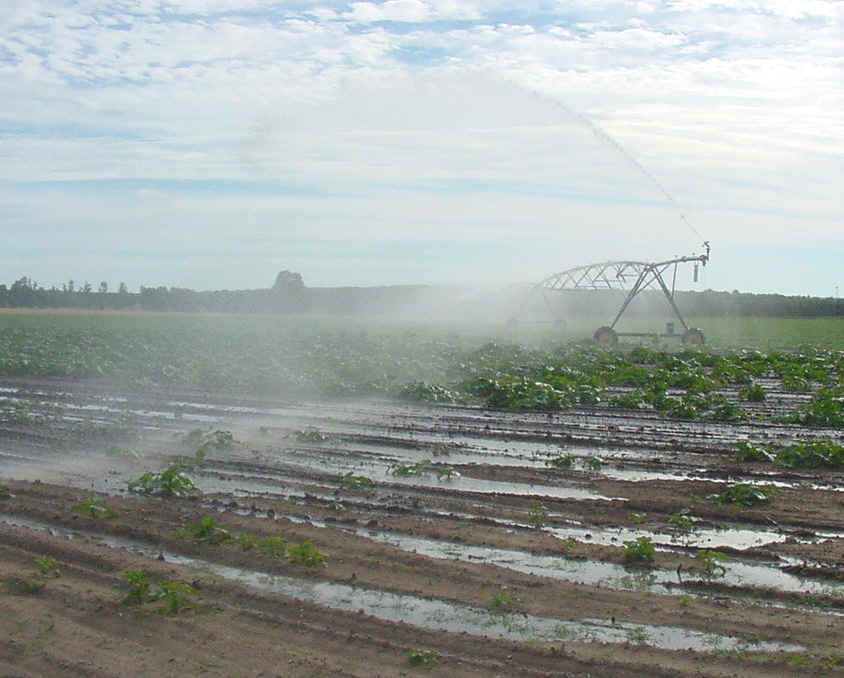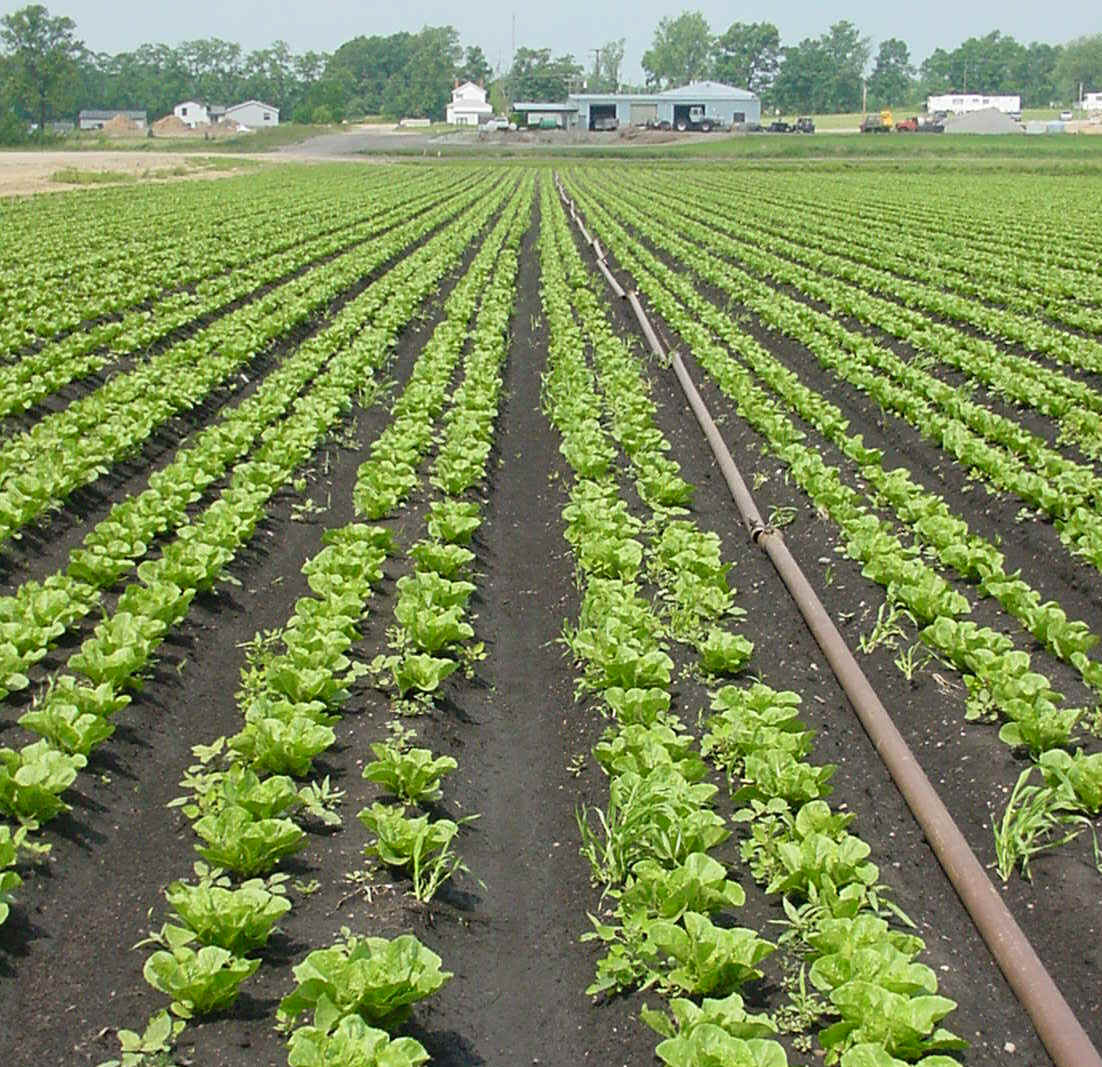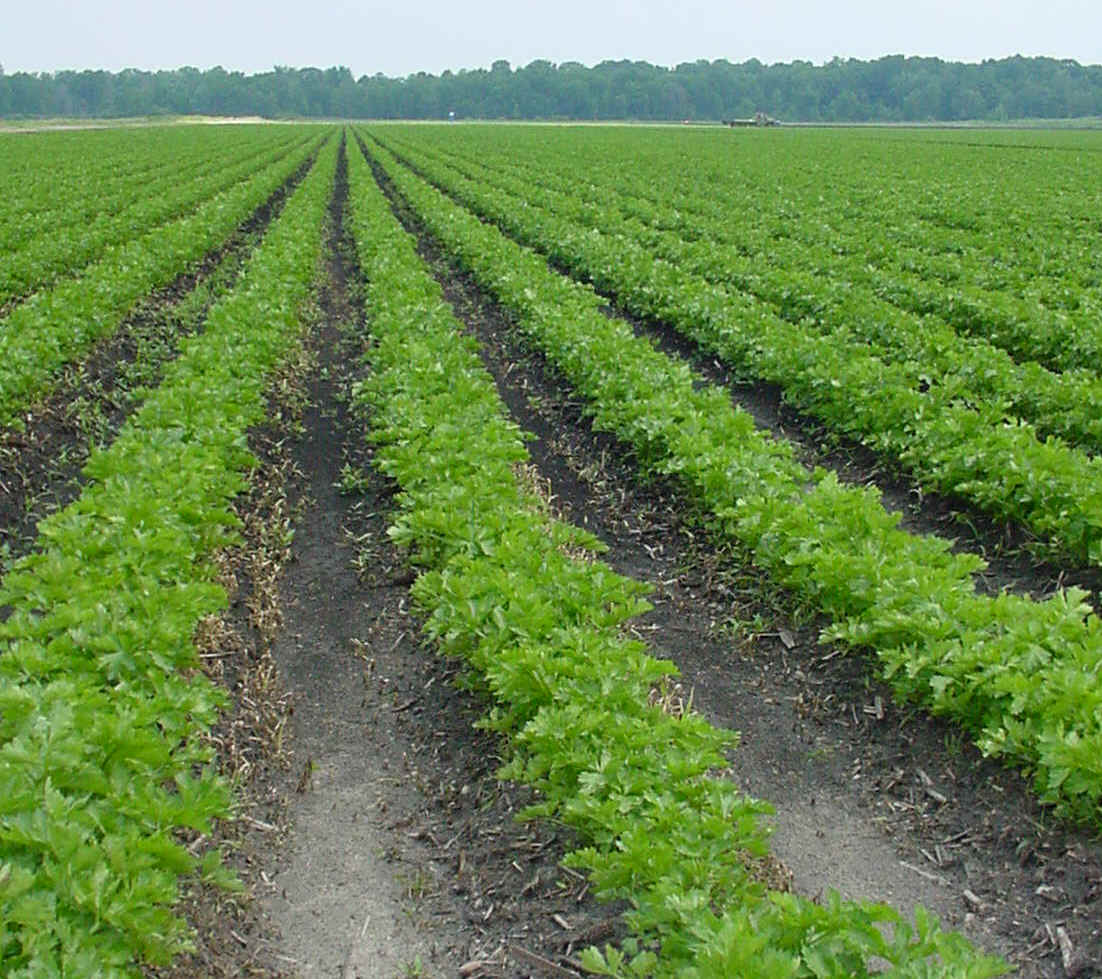IRRIGATION
In order to maximize yields, farmers often try to tightly control the water regime in
their fields. This is done in two main ways: irrigation, and subsoil drainage.

Why do farmers irrigate? There are several answers/reasons. They
often in places where a dependable source of water is lacking, such as in dry areas (e.g.,
deserts). But irrigation is also done to:
1. increase yields of what is already
grown. By maintaining optimum soil moisture levels (e.g., irrigation of corn
in St. Joseph Co., MI), yields can be increased, even in humid climates like Michigan.
In this regard, timing may be everything. For example, corn's moisture
needs are most critical at first tasseling, whereas oats' needs are most critical at milk
stage. Note that additional water may increase yields, but also may require higher
fertilizer and pesticide inputs (weeds and bugs like moist conditions too!!). The
pumpkin patch below will clearly yield larger and better pumpkins under irrigation, than
it would under natural rainfall only.

2. Irrigation is a type of "crop insurance". Farmers
often use irrigation only as a fall-back measure to avoid the disaster of a long dry spell
(in "normal" years we may not need it).
3. Irrigation may allow you to grow 2-3 crops per year where w/o it you
could only grow one. (This is, in effect, increasing yields by increasing the number
of crops planted.)
4. Irrigation enables you to grow things that you couldn't
ordinarily grow. For example, 100% of Egypt's agriculture is irrigated!!
Cotton and alfalfa is exported from Saudi Arabia!
With the security irrigation provides, additional inputs that
further promote high yields (pesticides, fertilizers, better tillage) become economically
feasible.
Note the irrigation pipe that is being laid in this field of lettuce.

Irrigation is on the increase in Michigan.
Source: Unknown
Most of Michigan's irrigated lands are in the southwestern lower peninsula, on sandy soils
with a shallow water table.
The Michigan-grown parsley (below) is irrigated.

This material has been compiled for educational use only, and
may not be reproduced without permission. One copy may be printed for personal
use. Please contact Randall Schaetzl (soils@msu.edu)
for more information or permissions.